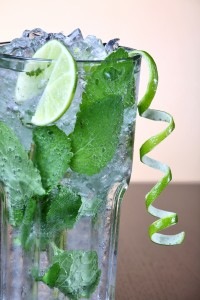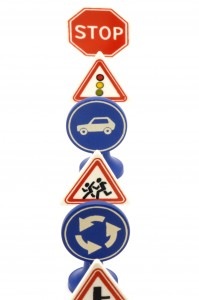The Magical, Wonderful Blueberry
It is peak blueberry season in the Northeast and I’m ecstatic. I love blueberries – especially the kind that I’ve been getting at my local farmers’ market: big, sweet, and almost crunchy when you first bite into them. That said, I also love wild blueberries – tiny, very dark blue, and sweet – the kind I eat on my visits to Maine.
A Native North American Fruit
The blueberry is a native American species. When the Pilgrims established a settlement at Plymouth In the winter of 1620, their neighbors, the Wampanoag Indians, taught them new skills that helped their survival — planting corn and using native plants, like blueberries, to supplement their food supply. The colonists learned to gather the berries, dry them in the sun, and store them for winter. Blueberries eventually became an important food that was preserved and canned. A blueberry beverage was a staple for Civil War Soldiers.
A Nutritional Superstar
A one cup serving of blueberries has about 80 calories and virtually no fat. Blueberries rank first in antioxidant activity when compared to forty other common fruits and vegetables. Concord grape juice ranks second with about two thirds of blueberries’ antioxidant activity followed by strawberries, kale, and spinach.
Antioxidants help neutralize harmful byproducts called “free radicals” that can be precursors of cancer and other age related diseases. Anthocyanins (the pigment that makes blueberries blue) are thought to be the reason for this health benefit.
Blueberry Buckle: Not A Crisp, Betty, Or Cobbler!
I was looking for something easy to make that would taste good, not have an overwhelming calorie/fat count, and appeal to both adults and children. Out came my mini-book: How To Make Simple Fruit Desserts from the Cook’s Illustrated Library. The crisps, betties, and cobblers all sounded great but mostly had more steps than I wanted to take. I hit the buckle description – and it’s minimal steps — on page 68 of the 96 page book.
What Is A Buckle?
Hint: it doesn’t secure what goes around your waist, but can cause an increase in its circumference. According to the “buckle” chapter, traditional buckles are just yellow cake batter with fruit folded in and streusel sprinkled on top. This recipe uses more fruit, less batter, and no streusel. The butter is not part of the batter, but melted in the pan while the oven preheats. The batter is added and the butter surfaces to form a thin, crisp top.
I adjusted the recipe to my liking: less butter and sugar, more fruit, and some cinnamon and ginger added to the batter because I like those flavors with blueberries. The decreased fat and sugar also decreases the calories. You could try using brown sugar Splenda mix to cut down the calories even more. I chose not to do that because I was serving children as well as adults and prefer not to offer kids artificially sweetened foods. Although I violated the rules of precise measurement that bakers often adhere to, the dessert was a huge success with very little effort. Really, how can you mess up blueberries? Even a self-professed blueberry hating 4 year old decided that her dessert wasn’t really blueberries anymore and cleaned her plate!
The Buckle Recipe:
The master recipe:
- 6 tablespoons unsalted butter
- ¾ cup all-purpose flour
- ¾ cup plus 1 tablespoon sugar
- 1 teaspoon baking powder
- ½ teaspoon salt
- ¾ cup milk
- 2 cups sliced stone fruits or berries
Master Instructions:
- Put oven rack in lower middle position and heat oven to 350 degrees.
- Put butter (I used ¼ less) in 8 inch square or 9 inch round pan and set in oven to melt.
- Whisk flour, ¾ cup sugar (I used ¼ less), baking powder, and salt in bowl. Add milk and whisk until just incorporated.
- When butter is melted, remove pan and pour batter into it without stirring it into the butter. Put fruit over batter (I used ¼ more fruit) and sprinkle with remaining tablespoon of sugar (I didn’t do this).
- Bake until batter turns golden brown, about 40 to 50 minutes.
- Serve warm.
SocialDieter Tip:
A blueberry buckle is an absolutely delicious one cooking bowl dessert with an acceptable calorie count and a high “good-for-you” dessert value.
You could really beef it up with a scoop of vanilla ice cream. Then again you could also be totally virtuous and eat just a plain bowl of berries. Great nutrition — but then the 4 year old self-professed blueberry hater wouldn’t have had dessert plus seconds!




